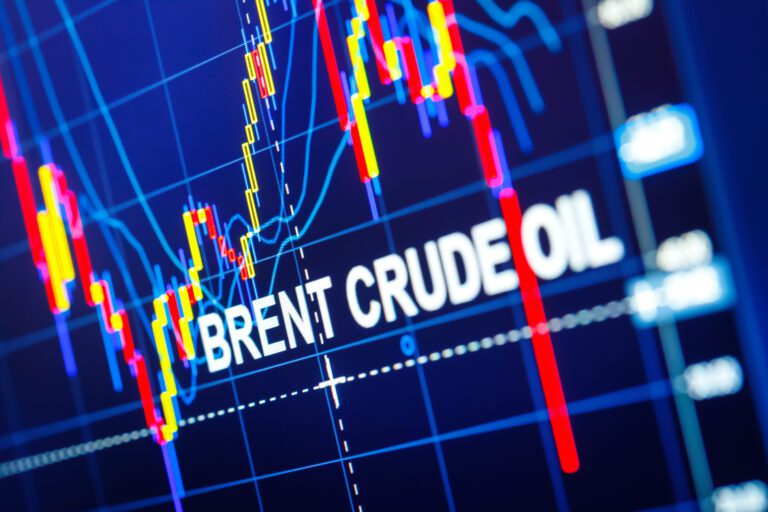
As we write this report, the current picture is becoming seriously complicated as only 3 days ago, Israel launched missiles at Iran, and the Persian Republic immediately retaliated. This has pushed prices spectacularly upwards, but for the purposes of this report, we will focus on events prior to this latest conflagration in the Middle East.
The average price of Brent Crude in January was $78 per barrel (bbl), but by the end of May it had fallen to $63 – a 20% drop in the price of crude. In the same period, the diesel price came down by 10 pence per litre, which saves a mid-sized fleet of 20 HGVs (Heavy Goods Vehicles) around £125,000 per annum on their fuel spend.
At one point in early May, there even looked to be the possibility of a full price rout, with crude falling to a 4-year low of $61 per barrel. It was at this point though, that the big hedge-funds re-entered the market and bought swathes of oil futures. This obviously supported the oil price against further falls and illustrated that even in a tariff-affected global economy, $60 / bbl is a natural floor for the price of crude, particularly when you consider that the world still consumes 100m barrels per day (bpd) of the stuff.
A new economic reality
Nonetheless, a drop in the oil price of this scale does usher in a new economic reality, principally for oil producing countries. As oil prices fell in the second quarter of the year, it seemed more than a coincidence (rather than Trump’s “genius” negotiating strategy), that Vladimir Putin was suddenly, and unexpectedly, willing to engage in peace talks on Ukraine.
In the Middle East, where high oil prices are essential to balance the books, mild panic seemed to be setting in, as countries such as Iraq and Bahrain – who need oil prices in excess of $100 / bbl – began to suffer the impact of rapidly diminishing $ receipts.
They were not alone. Any price below $150 / bbl, means that the likes of Nigeria and Venezuela see their deficit increase, whilst even Saudi Arabia needs an oil price of circa $80 to match its vast spending programme. Worst of all is the aforementioned Iran, whose sprawling nuclear programme means a breakeven crude price in excess of $200 / bbl is required…
“A DROP IN THE OIL PRICE OF THIS SCALE DOES USHER IN A NEW ECONOMIC REALITY”
It would seem that low prices present an existential threat to most oil producing nations and, therefore, you could reasonably expect OPEC (basically the Middle East along with Nigeria and Venezuela) to be doing everything it can to push oil prices back up. Further production cuts for example, would starve the markets of crude and thus shore up the price.
Well…one might logically make that conclusion, but quite unfathomably, OPEC seems to be pushing in the other direction! They have declared that in the second half of 2025, their members will reign back on the production cuts that have characterised the cartel’s policy for the last 3 years, and open the taps, produce more oil and thus surely see even lower prices for their crude…
Go figure! To this observer, the thinking here is totally baffling; turkeys voting for Christmas is the only thing that springs to mind! It’s possible that OPEC sees a future demand curve that is far more bullish than the current evidence suggests, but even in the cartel’s highly optimistic scenario of global oil demand hitting 120m bpd, the reality here and now is that demand is sluggish and unlikely to increase rapidly because of China’s faltering economy and the prospect of more problems down the road as a result of tariffs.
Lower prices will hurt commercial oil producers
OPEC’s only rationale must be around market share, and the argument here is that lower prices, whilst hurting OPEC countries, will hurt commercial oil producers more. This will drive the latter out of business, allowing OPEC countries to step in and take volume that was previously theirs.
This rather binary “desk-top” strategy seems flawed based on historical experience, where OPEC countries have shown absolutely zero appetite to absorb low-price induced economic pain (even in the short-term). Furthermore, commercial operators – specifically in the US shale patch – have proved their resilience on more than one occasion (think 2014 and 2020) and will simply return to the market to steal back market share, when the oil price recovers.
If OPEC really does start to unwind previously agreed production cuts, then the current global over-supply position will be compounded. At the same time, as long as (huge) uncertainty reigns with regard Trump’s tariff regime, then demand will also remain weak. Put these together, and you have an oil price that will keep falling. However, the Israeli-Iranian conflict changes everything and looking back at our January report, it feels remarkably prescient.
At the time we said that whilst “supply and demand economics play-out in slow-time…crises in oil producing regions tend to have immediate impacts”. As we write this report, this immediate impact has been an oil price that has risen to $77 per barrel in the space of a few days. This is to be expected, because a war involving the world’s 6th biggest oil producer (Iran), controlling a shipping lane that transports 25% of the world’s seaborne oil (Straits of Hormuz) and in a region controlling 30% of global oil production (Middle East), is always going to outweigh supply and demand fundamentals.

Portland
www.stabilityfromvolatility.co.uk
Image credit: Portland Fuel, Dreamstime

